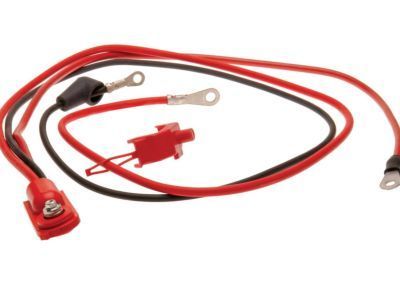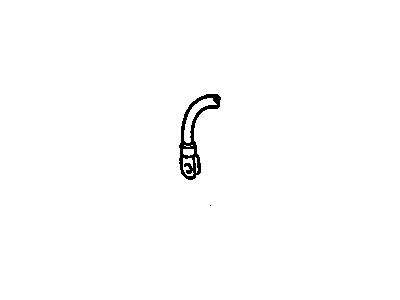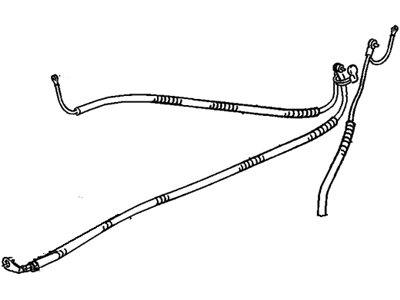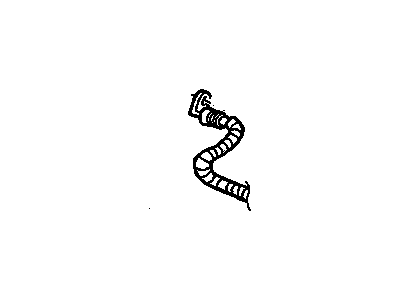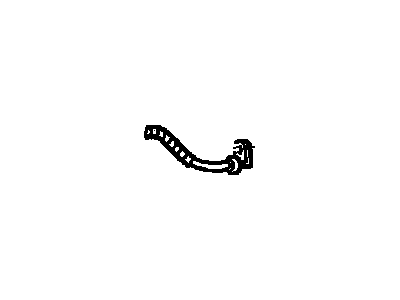My Garage
My Account
Cart
Genuine Pontiac Firebird Battery Cable
Car Battery Cable- Select Vehicle by Model
- Select Vehicle by VIN
Select Vehicle by Model
orMake
Model
Year
Select Vehicle by VIN
For the most accurate results, select vehicle by your VIN (Vehicle Identification Number).
10 Battery Cables found
Pontiac Firebird Cable Asm,Battery Positive
Part Number: 12157335$35.93 MSRP: $67.32You Save: $31.39 (47%)
Pontiac Firebird Battery Cable
Battery Cable in Pontiac Firebird automobiles is used in transmitting electrical current from the battery to other connected electrical system to facilitate the working of the starter motor and the ignition of the engine. Although these cables are serviced with the intention of providing a starting mechanism for the vehicle, they undergo a degradation process in due course due to oxidation, wear and corrosion etc., and this might cause starting problem or even the vehicle might not start at all. The cables can be regularly checked for any physical damages and can also be subjected to the voltage drop test so as to enhance their performance. There are reports of different Battery Cable being used in different Firebird models; the major differences are sometimes about the cables used and their construction, mainly because of the materials employed. Damage or aging of the battery cables may lead to problems in the connection between the battery and starter; superior replacement battery cables can be procured to overcome this problem. Therefore owners can be able to select quality replacement options for their vehicles thus sustaining the functionality of the vehicle so that it does not develop other faults.
Each OEM Pontiac Firebird Battery Cable we offer is competitively priced and comes with the assurance of the manufacturer's warranty for the part. Furthermore, we guarantee the speedy delivery of your orders right to your doorstep. Our hassle-free return policy is also in place for your peace of mind.
Pontiac Firebird Battery Cable Parts Questions & Experts Answers
- Q: How to inspect and replace battery cables on Pontiac Firebird?A: Periodically inspect the entire length of each battery cable for damage, cracked or burned insulation and corrosion. Poor battery cable connections can cause starting problems and decreased engine performance. Check the cable-to-terminal connections at the ends of the cables for cracks, loose wire strands and corrosion. The presence of white, fluffy deposits under the insulation at the cable terminal connection is a sign the cable is corroded and should be replaced. Check the terminals for distortion, missing mounting bolts or nuts and corrosion. If only the positive cable is to be replaced, be sure to disconnect the negative cable from the battery first. Caution: On models equipped with a Delco Loe II audio system, disable the anti-theft feature before disconnecting the battery. Disconnect and remove the cable(s) from the vehicle. Make sure the replacement cable(s) is the same length and diameter. Clean the threads of the Starter or ground connection with a wire brush to remove rust and corrosion. Apply a light coat of petroleum jelly to the threads to ease installation and prevent future corrosion. Inspect the connections frequently to make sure they are clean and tight. Attach the cable(s) to the starter or ground connection and tighten the mounting nut(s) securely. Before connecting the new cable(s) to the battery, make sure they reach the terminals without having to be stretched. Connect the positive cable first, followed by the negative cable. Tighten the nuts and apply a thin coat of petroleum jelly to the terminal and cable connection.


